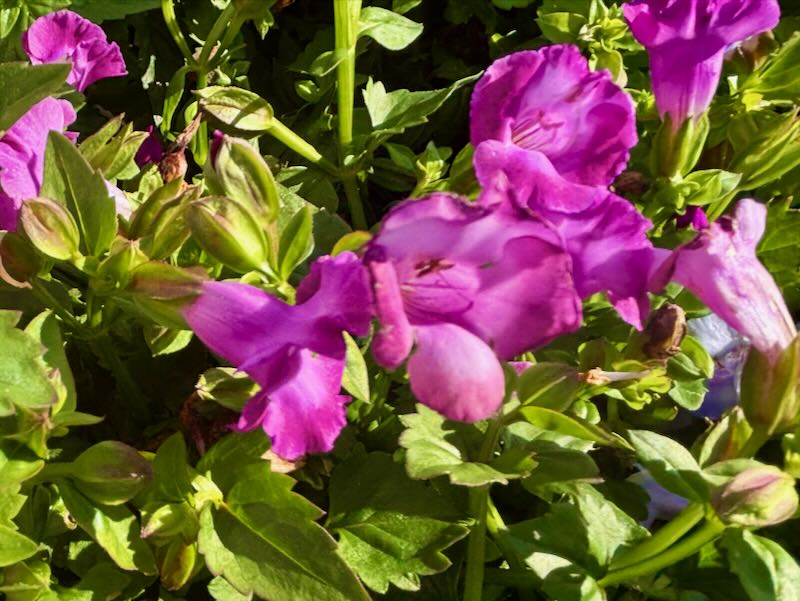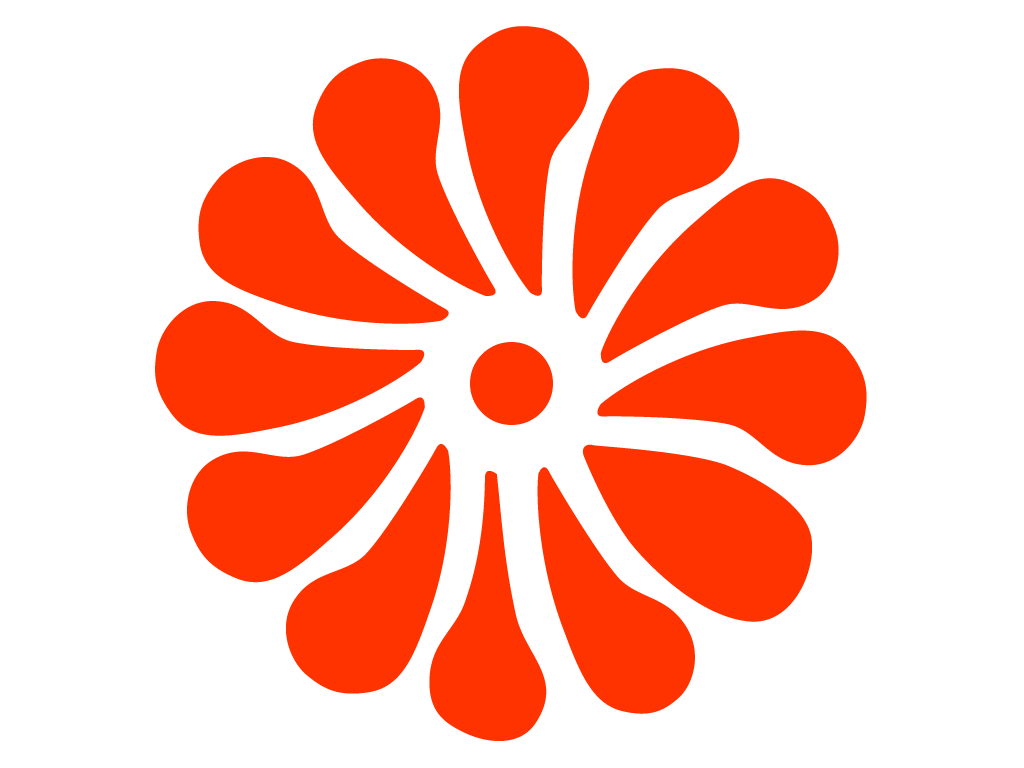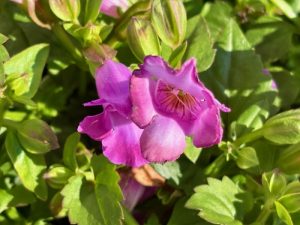Torenia ‘Summer Wave® Trailing Large Amethyst’: nonstop, spill-over color for shade and heat
Torenia ‘Summer Wave® Trailing Large Amethyst’ bursts with rich amethyst-purple blossoms that spill from baskets, edge shady paths, and brighten porch planters all summer. Gardeners also know it as Wishbone Flower, Summer Wave® Trailing Amethyst, and Large Amethyst Wishbone Flower. This vigorous hybrid from the Summer Wave® series brings the rare combo many gardeners want: true heat-and-humidity tolerance, self-cleaning flowers, and a graceful trailing habit that looks polished with very little work. In warm zones it flowers nearly year-round; elsewhere it blooms from planting to frost without a pause.
Meet the plant and its family
This cultivar sits within the Linderniaceae family, a group that includes several shade-tolerant ornamentals native to tropical and subtropical regions. The genus Torenia carries the common name Wishbone Flower because the two stamens meet like a tiny wishbone in the throat of each bloom. ‘Summer Wave® Trailing Large Amethyst’ is a modern vegetatively propagated selection bred for dependable performance in real summer conditions—high heat, sticky humidity, and bright indirect light—where many bedding plants stall.
What Torenia ‘Summer Wave® Trailing Large Amethyst’ looks like
Expect dense, minty-green foliage made of small, pointed leaves on flexible, trailing stems. The habit stays compact and cascading, topping out at 20–25 cm (8–10 in) high and trailing up to 90 cm (36 in). Spacing plants 25–30 cm apart (10–12 in) gives each one room to mound before it drapes. The trumpet-shaped blooms read as deep magenta-purple to royal amethyst, with a softer, lilac-flushed throat that shows off the “wishbone.” Calyces and throats often glow a paler tone, which adds contrast in shade. Flowers drop cleanly as they age, so you never need to deadhead to keep color coming.
Flowering season you can count on
Plant it after frost and enjoy color from late spring to the first hard freeze. In hot-summer regions, flowers keep coming straight through heat waves as long as the root zone stays evenly moist. In frost-free zones (USDA 10–11), it can bloom on and off for most of the year, strongest in spring and autumn when nights cool. Because the plant self-cleans, you simply feed and water to power continuous buds.
Why this Wishbone flower thrives where others fail
Heat and humidity topple many classic shade plants. This Torenia does the opposite. It sets flower after flower even when daytime highs push past 32°C (90°F). It also tolerates bright shade, dappled understory light, and morning sun with afternoon protection. Once established, it handles brief dry spells better than most shade bloomers, yet it still prefers consistent moisture. Deer usually ignore it, and hummingbirds, bees, and early-morning butterflies love the tubular blooms.
Where Torenia ‘Summer Wave® Trailing Large Amethyst’ shines in design
Hang it in baskets where you want a cascade of color at eye level. Tuck it into window boxes under taller “thrillers” for an elegant spiller. Edge a shady flagstone walk, or fill the front of north-facing borders with ribbons of purple. In mixed containers, pair it with Coleus, Ferns, Heuchera, and compact Begonias for layered texture. Against silver foliage—Dichondra ‘Silver Falls’ or Stachys byzantina—the amethyst tones glow. In coastal gardens, the plant also works in bright, protected courtyards where heat reflects off walls but light stays filtered.
How to Grow Torenia ‘Summer Wave® Trailing Large Amethyst’
Light
Give bright shade to part shade. Aim for morning sun with afternoon shade, or a spot with high, dappled light under open trees. In cooler coastal or mountain summers, you can push it into light, filtered sun for stronger flowering. Avoid harsh, direct midafternoon sun, which can bleach petals and dry containers too fast.
Soil
Use a fertile, well-drained mix that holds moisture without staying soggy. In beds, blend 5–8 cm (2–3 in) of compost into the top 20–25 cm (8–10 in) of soil before planting. In containers, choose a high-quality peat- or coir-based mix and add 10–20% perlite or fine bark for extra porosity. Ideal pH runs slightly acidic to neutral (about 6.0–7.0), but the plant adapts if drainage stays sharp.
Watering
Water deeply, then let the top 2–3 cm (¾–1 in) of soil dry before watering again. In-ground plants often settle into a rhythm of 2.5 cm (1 in) of water per week from rain or irrigation, more during heat waves. In containers, check daily in midsummer; baskets can need water once or even twice a day during extreme heat. Always water the root zone, not the foliage, to keep leaves pristine and discourage powdery mildew.
Fertilizing
Feed lightly but consistently. At planting, work a slow-release, balanced fertilizer into the soil at label rate. In containers, supplement every 2–4 weeks with a half-strength liquid feed to fuel constant bloom. Favor formulations with moderate nitrogen and good potassium to support flowers. In rich garden beds, a monthly liquid feed during peak bloom is enough.
Temperature and hardiness
Grow it as a warm-season annual in most climates. It shines in USDA Zones 10–11 outdoors year-round and performs from planting to frost in Zones 3–9. Night temperatures of 13–21°C (55–70°F) keep buds forming. Light frosts end the show; relocate baskets to a bright, frost-free porch for a few extra weeks if you like.
Humidity and airflow
High humidity suits this plant. Even so, keep decent airflow around baskets and window boxes. Space plants 25–30 cm (10–12 in) apart so leaves dry after rain. In extra-still spots, a small gap behind a planter and the wall improves circulation and bloom quality.
Planting and spacing
Set transplants level with the surrounding soil. In beds, place them 25–30 cm (10–12 in) apart. In hanging baskets 30–35 cm (12–14 in) across, plant three evenly spaced starts for a full skirt by midsummer. And in window boxes 20 cm (8 in) deep, stagger plants 20–25 cm (8–10 in) apart front to back for a layered spill.
Pinching and grooming
You don’t need to deadhead. The plant self-cleans. If stems stretch after a heat wave, shear the tips by 2–4 cm (¾–1½ in). That quick pinch triggers branching and another flower surge within two weeks in warm weather. As you water, flick off spent blooms that still dangle on a rainy week; it tidies the look and speeds fresh color.
Container culture
Choose a basket or pot with large drainage holes and a 30–45 cm (12–18 in) diameter for best trailing effect. Water thoroughly until excess drains, then wait for the surface to dry again. In hanging baskets exposed to sun and wind, line the top of the mix with a 1–2 cm (½–¾ in) layer of fine bark to slow evaporation. Pair with moisture-minded companions—Bacopa, Impatiens, and compact Fuchsias—to match water needs.
Propagating Torenia ‘Summer Wave® Trailing Large Amethyst’
Most Summer Wave® selections are sold as vegetatively propagated hybrids to preserve performance. Where local laws and plant-rights policies allow home propagation, take 7–10 cm (3–4 in) non-flowering tip cuttings in late spring. Strip the lowest leaves, dip the cut end in a mild rooting hormone, and stick into a sterile 50:50 perlite and peat/coir mix. Keep bright but out of direct sun and maintain even moisture and warm roots around 21–24°C (70–75°F). Roots form in 2–3 weeks. Harden new plants for a week outdoors in shade before potting on. If propagation is restricted in your area, purchase additional plants instead and focus on superior care for season-long coverage.
Pests and diseases
You will rarely see serious issues if you water the soil, not the foliage, and keep air moving.
Aphids sometimes cluster on the newest shoots in spring. Knock them back with a firm water spray or use insecticidal soap if needed, repeating every 5–7 days until you break the cycle. Whiteflies can appear on warm, still patios; yellow sticky cards help you monitor and reduce numbers. Spider mites stipple leaves in extreme heat and drought, especially in baskets; rinse foliage periodically and keep the root zone evenly moist. Thrips can rough up petals during very hot, dry spells; prune a few affected tips and improve watering consistency.
Powdery mildew can develop if leaves stay damp and air stands still. Space plants properly, water early in the day, and remove a few interior stems if baskets get too dense. Botrytis (gray mold) favors cool, wet conditions and old petals; because flowers self-clean, you avoid most problems. Root rot only appears in heavy, waterlogged media; keep drainage sharp and never let containers sit in saucers of water.
Troubleshooting quick guide
Few flowers in shade: increase morning light or move to a brighter dappled spot. Feed lightly with a bloom-supportive fertilizer and avoid heavy nitrogen.
Leggy stems after hot weather: shear the plant lightly and feed once; branching returns fast in warm nights.
Leaves yellowing from the interior: usually overwatering in containers. Let the top 2–3 cm (¾–1 in) dry before watering again. Check that drainage holes run free.
Buds drop after a rainstorm: not uncommon. Improve airflow and resume normal watering; the plant resets quickly and pushes new buds.
Edges crisp or bleached: midday sun and hot wind scorched foliage. Shift baskets back under the eaves or provide dappled shade during the hottest hours.
Smart garden uses and companion ideas
In hanging baskets by a shaded entry, combine ‘Large Amethyst’ with lime heuchera and trailing dichondra for a cool palette. In window boxes, pair with pale pink New Guinea Impatiens and white Bacopa for a cottage look. For an understory bed beneath open-branched trees, plant drifts of Torenia along with Ferns and Hosta to weave color through texture. Along a north-facing fence, allow stems to trail over low walls where the blossoms read at eye level. In transitional sun/shade courtyards, run a rectangle of ‘Large Amethyst’ around a taller centerpiece like a dwarf banana or a potted Cordyline; the purple skirt softens bold foliage.
Seasonal care calendar
Early spring (or at planting): Prepare the soil with compost. Plant after the last frost. Space 25–30 cm (10–12 in). Water in deeply and mulch lightly to moderate moisture swings. Start a slow-release fertilizer or plan a liquid feed schedule.
Late spring: Train or tuck stems so they drape cleanly. Water when the surface dries. Begin biweekly liquid feeding in containers.
Midsummer: During heat waves, water baskets daily and beds as needed. If growth stretches, shear lightly and feed; blooms rebound fast.
Late summer to early fall: Keep feeding at half strength every 2–4 weeks. As nights cool, color intensifies and flowering often increases.
Late fall: Before frost, enjoy a final flush. Compost spent bed plants after a hard freeze. Move baskets under cover to extend color a week or two if temperatures flirt with freezing.
Frequently asked questions
Will it bloom in full shade?
Yes, it blooms in bright shade and dappled light. In very deep shade, it will flower less. Give a few hours of soft morning sun for best results.
Can I grow it in full sun?
You can in cooler climates if you keep the root zone evenly moist. In hot interiors, provide afternoon shade so petals do not scorch.
Is it drought tolerant?
More than many shade annuals, but don’t let it dry to wilting repeatedly. Consistent moisture rewards you with continuous bloom.
Is it deer resistant?
Deer typically pass it by, though a hungry deer may sample anything. On patios, you’ll rarely see browse.
Will it return next year?
Treat it as an annual outside USDA 10–11. In frost-free climates, it can persist and flower across seasons.
The takeaways for success
Place it in bright shade or morning sun. Plant it in rich, well-drained soil. Water deeply, then let the surface dry. Feed little and often. Shear lightly if stems stretch. With those simple steps, Torenia ‘Summer Wave® Trailing Large Amethyst’ repays you with lush, amethyst color from planting to frost—no deadheading, no drama, just a steady, elegant spill of flowers that makes shade sing.



